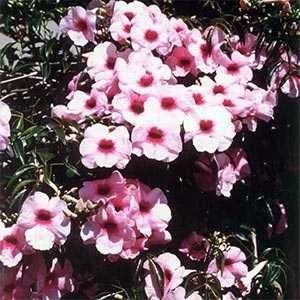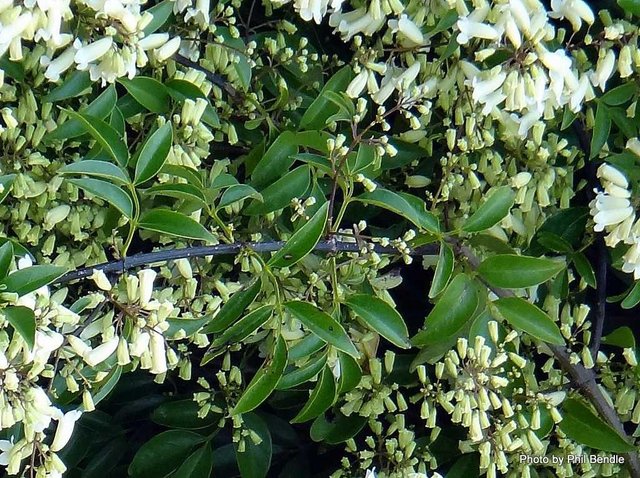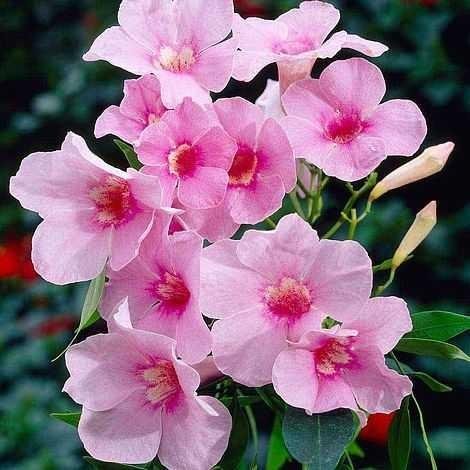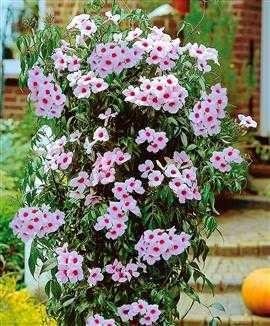The Wonga-wonga vine, (Pandorea pandorana), is a fast-growing Australian native climbing plant. It can be found in eastern Australia from Queensland to Tasmania growing vigorously over tall trees. It is also a spectacular garden plant.
Details
Common name: Wonga-wonga vine
Botanic name: Pandorea pandorana. This name is derived from the legend of the Greek goddess Pandora, because of the similarity of the seed capsules to Pandora’s Box.
Varieties: The species has heavy clusters of white, tubular flowers often tipped with purple dots. This form can be seen in bushland areas in eastern Australia. There are however several named varieties available including:
‘Snow Bells’ is a vigorous climber suited to screening. It has creamy white flowers in spring.
‘Golden Showers’ is a rich golden colour with brown tips to the flowers.
Other species: The other species, P. jasminoides, grows from the North Coast of New South Wales to Queensland and flowers almost continuously from August to January. There are several varieties of this species including, ‘Alba’, which has milky white flowers, and ‘Rosea’ which has a shell pink petals with a crimson throat.
Best climate: The wonga-wonga vinegrows well in all parts of Australia but needs a warm micro-climate in the colder mountain areas. P. jasminoides needs a warmer climate and grows well in Brisbane, Perth, Sydney and Townsville and in warm microclimates in Adelaide and Melbourne.
Description: The wonga-wonga vine has a profusion of flowers in early spring and is a dense evergreen creeper all year round.The only drawback to the wonga-wonga vine is its brief flowering time. It flowers only for two to three weeks in spring (between early August and October depending on its location).
Growing conditions: The wonga-wonga vine prefers an open, sunny position and a mild climate without heavy frosts. It will tolerate light shade. Train the twining stems in the early stages of growth. Light pruning is desirable after flowering to maintain a tidy shape. It needs little other care other than water in dry times.
Best uses: It is an ideal choice to clothe a fence or wall, disguise a shed or stump or simply create an evergreen screen.





Source: